Vivid examples of Chinese civilization and diversified pattern
Author:Seeking the network Time:2022.07.17

Vivid examples of Chinese civilization and diversified pattern
Sanxingdui Museum
The Sanxingdui Museum is located in the northeast corner of the Sanxingdui site. It is a large -scale modern specialty site museum in my country. It focuses on collecting and displaying the cultural relics unearthed from the Sanxingdui site and the "sacrifice pit" on behalf of the 1st and 2nd merchants. As "one of the greatest archeological discoveries of human beings in the 20th century", the magnificent ancient city, rigorous functional partitions, brilliant utensils, mysterious and magnificent style of art, and mature etiquette regulations, through The fog of history outlines the romantic and rising ancient Shu civilization scrolls, which is a vivid example of the diversified pattern of Chinese civilization.
not
Sleeping for three thousand years, awakening the world
In June 2021, when archaeologists slowly took out a bronze -puppet film from the "Sacrifice Pit" from Sanxingdui Site No. 3, a gold ware that was severely deformed appeared in front of people. At the time of unearthed, this golden device seemed to be rubbed into a ball, which was difficult to distinguish the shape. After repair, a complete golden mask slowly presented. This thin -butterfly wing has a width of 37.2 cm wide, 16.5 cm high, about 100 grams, hollowed eyebrows, roundeds of ears, tall nose, large and slightly open mouth, majestic shape and sacred shape. One of the most complete gold masks unearthed. This major archeological discovery shocked the world again.
From the new round of archeological excavations from the Sanxingdui site since 2019, a series of major progress has been achieved, and many "sacrifice pits" have been discovered. The spiritual world. Among them, No. 3 pit is full of pits, and bronze, jade, and golden wares are a big view. Rare cultural relics such as portrait portraits and largest bronze masks have been extracted and unearthed. It confirms the exchange and interaction of early culture such as Sanxingdui and Gansu; the huge gold mask unearthed from the pit No. 5 shows that the color of the Sanxingdui culture has been extracted; Found turtle back -shaped grid; large bronze altar was found in the 8th pit. After the carbon 14 measurement year, except for the late pits and No. 6 pits, the remaining several pits were basically the same. It was about 3200 to 3000 years ago, and it belongs to the late Shang Dynasty.
"Guanghan Famous District, the old soil of the city ... It is east of the Wanwan, and its west is accompanied by the moon." The three undulating loess piles in the southern end of the central area and its northern shape, like the moon bay platform, form a well -known landscape of Guanghan, "Samsung with the moon". In 1929, a peasant accidentally discovered more than 400 fine jade artifacts when he dotted the Moon Bay in Sanxingdui, Guanghan, which promoted the excavation of the Moon Bay in 1934. The prelude to the archeology of the Sanxingdui site. In the early 1980s, the Sanxingdui excavator uniformly named the "Sanxingdui Site" uniformly named "Sanxingdui Site" based on the information obtained in the years, and for the first time, it was conducted in installments. In 1986, the discovery of the "sacrifice pit" of the Sanxingdui site No. 1 and 2 made the ancient Shu history legend that has been identified as authenticity since ancient times. The Sichuan Provincial Institute of Cultural Relics and Archeology and Sanxingdui Museum launched large -scale archeological exploration, trial excavation, and investigation at the Sanxingdui site and peripherals, and obtained a series of major breakthroughs -the highest -level building area of Qingguanshan platform as the "palace" nature The process of layout and construction and evolution of the city site is gradually clarified. With support, the comprehensive exploration and key excavation of the Sanxingdui site started again and made significant progress. As of May 2022, nearly 13,000 cultural relics such as golden masks, copper squares, copper altars, and god tree patterns have been unearthed.
not
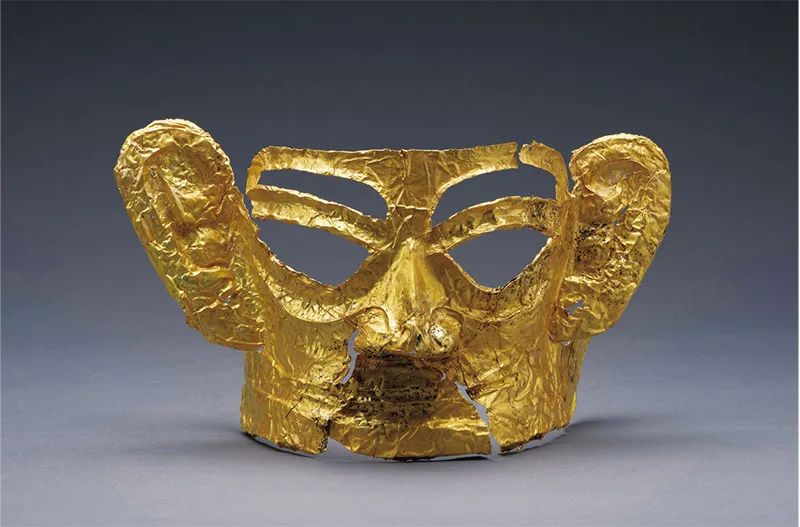
The picture shows the golden mask in the late Shang Dynasty. Photo confession of the Sichuan Provincial Institute
The Sanxingdui site has an area of 12 square kilometers, and the core area is about 3.6 square kilometers. It is the most distributed range, the longest continuation time, and the most rich cultural connotation in the southwestern region of my country. General Secretary Xi Jinping pointed out that the major achievements of my country's archeological discovery have evidenced the history of human beings in my country, the cultural history of 10,000 years, and the history of more than 5,000 years. Archaeologists will excavate the ancient relics buried underground, reveal the history of dust, and transform their interpretation and understanding into new historical knowledge. The General Secretary emphasized: "The exploration of the origin and formation of civilization is a complex and long systematic project. It needs to organically integrate archeological exploration and literature research with natural science and technology means to comprehensively grasp the factors such as material, spiritual and social relationships. Gradually restore the development of civilization from a trick to rivers to rivers. "Sanxingdui archeological discovery greatly made up for the shortcomings of ancient literature, showing the uniqueness and creativity of the ancient Shu civilization, and the close connection with other ancient civilizations in China, which highlights the manifestation, which highlights the manifestation, which shows the manifestation, which highlights the manifestation. Ancient Shu civilization is an important position of Chinese civilization.
in
Archaeological relics and historical relics are the testimony of history. General Secretary Xi Jinping pointed out that the major achievements of my country's archeological discovery fully show that my country has gone at the forefront of the world in the development of ancient civilization in various eras such as the Neolithic era, the bronze era, and the iron era. The number of cultural relics unearthed in the Sanxingdui site, the number of cultural relics, the large shape, the strange shape, and the rich cultural connotation.
not
The picture shows the bronze portrait of the late Shang Dynasty. Map of Sanxingdui Museum Zhang Yan/Photo
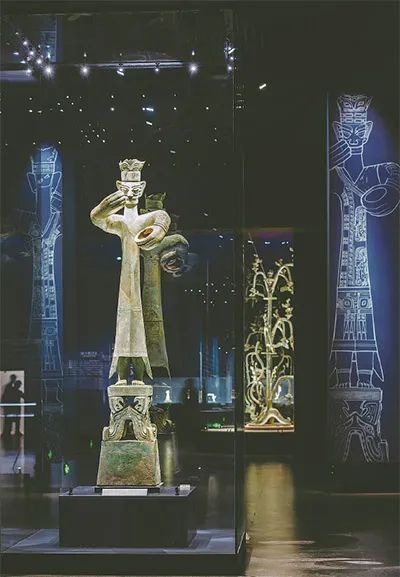
Bronze Portrait, a portrait of 180 cm high and 260.8 cm in height, has a history of more than 3,000 years. It is the world's highest and most complete bronze portrait, and is known as the "king of bronze statues of the world". The portrait head is high, the arms are slightly embracing the chest, the hands are held in hollow, the feet wear the feet, and the barefoot stands on the square monster seat. The decoration on the clothes is complicated and beautiful, mainly dragon patterns, supplemented by bird patterns, insect patterns, and visual lines. The overall image of the statue is solemn and solemn. It is made of segmented casting method. According to the height, proportion, and action of real people, it has exaggerated the eyes, ears and hands. The delicateness is rare in the history of Xia, Shang and Zhou Dynasties.
The strange shape of cultural relics shows the perfect combination of the rich imagination and exquisite handicraft technology of the ancient Shu people. The bronze vertical mask that is nicknamed "Thousand Miles Eyes, Shunfeng Ears" is named after the exaggerated shape of the eyes and ears. Its volume is huge, with outstanding outlines, exaggerated features, 138 cm wide, 66 cm high. The surrealing shape makes this statue reveal the mysterious and quietness and majesty, giving people a strong sense of deterrent. The bronze god tree No. Ⅰ was unearthed in 1986 and reached 396 cm. It consists of three parts: base, tree and dragon. The largest in the form of all bronze cultural relics. The statue of the god tree has three layers of branches and leaves, and each layer has three branches. There are a bird standing on the flowers and fruits of the three upturns. There are nine birds (that is, the sun god bird), and a drooling dragon hangs on the lower part.
A large number of gold products, jade rituals and pottery have also been unearthed in Sanxingdui sites, all showing superb technical levels. Archaeological discovery also shows that the construction of the Sanxingdui site is unique, and the distribution of functional areas such as sacrifice areas, ordinary residential areas, and handicraft workshops in the city site is in order. Many housing buildings have shown that a large number of ancestors have lived for a long time. These houses have three forms: square, rectangular, and circular, mostly rectangular and square. Its construction method is used to dig grooves on the ground, columns in the groove, with small wooden sticks and bamboo sticks as wall bones, mud with mud on both sides to become walls, and then the wall is grilled by fire. The roof has strong ancient Shu regional characteristics. These archeological discoveries show that as an important economic, political, and cultural center in the ancient Shu era, the Sanxingdui area has created a prosperous social and cultural life.
General Secretary Xi Jinping pointed out: "In the history of the long -term development of civilization for more than 5,000 years, the Chinese people have created a dazzling Chinese civilization and made significant contributions to the promotion of human civilization." Fully shows the diversity and richness of Chinese civilization.
not
Empirical Chinese civilization diversified integration pattern
The huge city walls, palace areas, sacrifice areas, dense living areas, residential areas, workshops, and a large number of precious cultural relics, as well as the distribution forms of the surrounding ruins, shine the dawn of early civilization. The rich cultural relics and distinctive characteristics of the Sanxingdui site show that it is one of the ancient civilization centers in the upper reaches of the Yangtze River.
The "Sacrifice Pit" No. 8 newly discovered a bronze portrait of the Snake body, which is successful with the bronze bird foot portrait of the "Sacrifice Pit" on the 2nd of 1986. Respect the statue of God. The idol is bumpy, wearing a horn mask, and his hands are supported on a bronze cricket with a square seat, and there is a cinnabar painted respected on his head. Copper portraits are characterized by ancient Shu civilization. Fangzhong copper is the representative of the first Zhou culture, and Zun is the representative of the Central Plains culture. These three cultural factors are gathered on the same utensils, vividly reflecting that ancient Shu civilization is an important part of Chinese civilization.
not
The picture shows the statue of the bird foot song on the late Shang Dynasty. Picture of Lu Haizi/Photo of the Sichuan Provincial Institute of Cultural Relics and Archeology
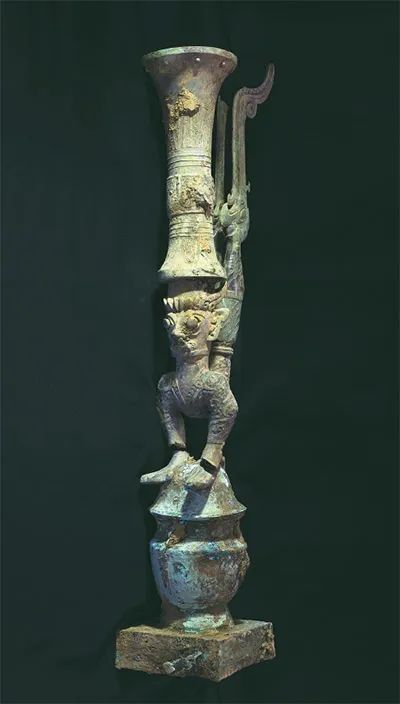
The majestic idols, masks of thousands of miles, god trees that communicate with the world, mysterious and strange altars ... These colorful bronze wares with ancient Shu cultural characteristics have become a branch of the bronze civilization of Chinese summer business. Features and complex cultural appearances are vivid examples of diversity and openness in the early stages of Chinese civilization. From the perspective of unearthed utensils, bronze medals, bronze bells, pottery, and teeth are typical utensils of the Central Plains Xia culture. Differences; copper Zun, copper, and copper 瓿 are typical utensils of business culture. The Dragon Tiger Zun of Sanxingdui is very similar in terms of subject matter and cultural connotation of Tiger Foods in Yinxu, Anyang, Henan; Ge has been discovered in Henan, Shaanxi, Shandong, and the vast number of South China; jade cone, jade, etc. have the characteristics of Liangzhu culture in the lower reaches of the Yangtze River. From the perspective of the smelting technology, casting technology and methods, and the polishing and detailed decoration of bronze wares, although the exceptions of Samsung Ding Bronze has a certain gap with the bronze wares in the Central Plains in the same period, the welding, Fan cast, claw casting, forging, forging, forging, forged Waiting for the process reflects the influence of the ancient Shu people who have accepted the culture of the Central Plains, and is proficient in the bronze casting technology. Dragon is a symbol of the Chinese nation. A large number of dragon -shaped utensils were unearthed in the Sanxingdui site, such as the dragon hovering on the bronze god tree, the shape of a goat -like dragon -shaped device, the dragon of the tiger head, the pork nose dragon shape, and the dragon -shaped shapes with rich quantities, different shapes, different sizes, and different sizes. Towns and other. The concepts and basic styles of the dragon are undoubtedly derived from the Central Plains and the Yangtze River Basin culture. Although the image of various dragons unearthed from the Sanxingdui site is different from Hongshan Culture, the Yulong and Bronze Dragon of the Central Plains, it also reflects it reflects The convergence appeared in its own identity, etiquette and religion. In addition to the cultural relics visible to the naked eye, archaeologists also found the "traces" of silk at the Sanxingdui site through modern scientific and technological means, filling the gaps without silk in the summer and business period in the southwest. As we all know, in the process of Chinese civilization integration, silk is a very significant convergence factor. Whether it is the myth, legends, historical records, or archeological discoveries, both ancient Shu and Central Plains have adhered to the roughly the same knowledge system and value system.
The towering wood must have its roots; the water of Huaishan must have its source. Chinese civilization is diverse, but the evolution of Chinese civilization is not the exterior of multiple civilizations, but integrates each other. The long -lasting Chinese civilization is like a towering tree cultivated in history and fertile soil. General Secretary Xi Jinping pointed out that the study of the origin of Chinese civilization should be closely integrated with major issues such as Chinese civilization characteristics and forms. Archaeological discovery of the Sanxingdui site shows that the ancient Shu civilization was based on the highly developed Neolithic culture of the Chengdu Plain, absorbing and condensing the essence of civilization of the Central Plains, Northwest and the Yangtze River Basin, thereby developing a highly developed ancient civilization formed. This ancient civilization is closely related to other regions of the country, witnessing the exchanges between civilization between the regions of the Chinese land.
General Secretary Xi Jinping emphasized: "Historical and cultural heritage not only vividly describes the past, but also profoundly affects the present and future; not only belongs to us, but also descendants of descendants. Protecting and inheriting historical and cultural heritage is responsible for history and the people. It is necessary to strengthen archeological work and historical research, so that the cultural relics collected in the museum, the inheritance displayed on the vast land, and the text written in ancient books live to enrich the history and culture of the whole society. "Sanxingdui Museum will continue to promote the protection and utilization of cultural relics The protection and inheritance of cultural heritage, digging the multiple values of cultural relics and cultural heritage, spreading more value symbols and cultural products carrying Chinese culture and Chinese spirit, and creating a strong social atmosphere of inheritance and promoting Chinese civilization.
not
(The content of this article is original, please indicate the source: Seeking.com)
not
Source: "Seeking" 2022/14
Author: Sanxingdui Museum
Production: Zeng Jiawen
Review: Yu Bo

- END -
"The World" won the "annual Chinese drama" award
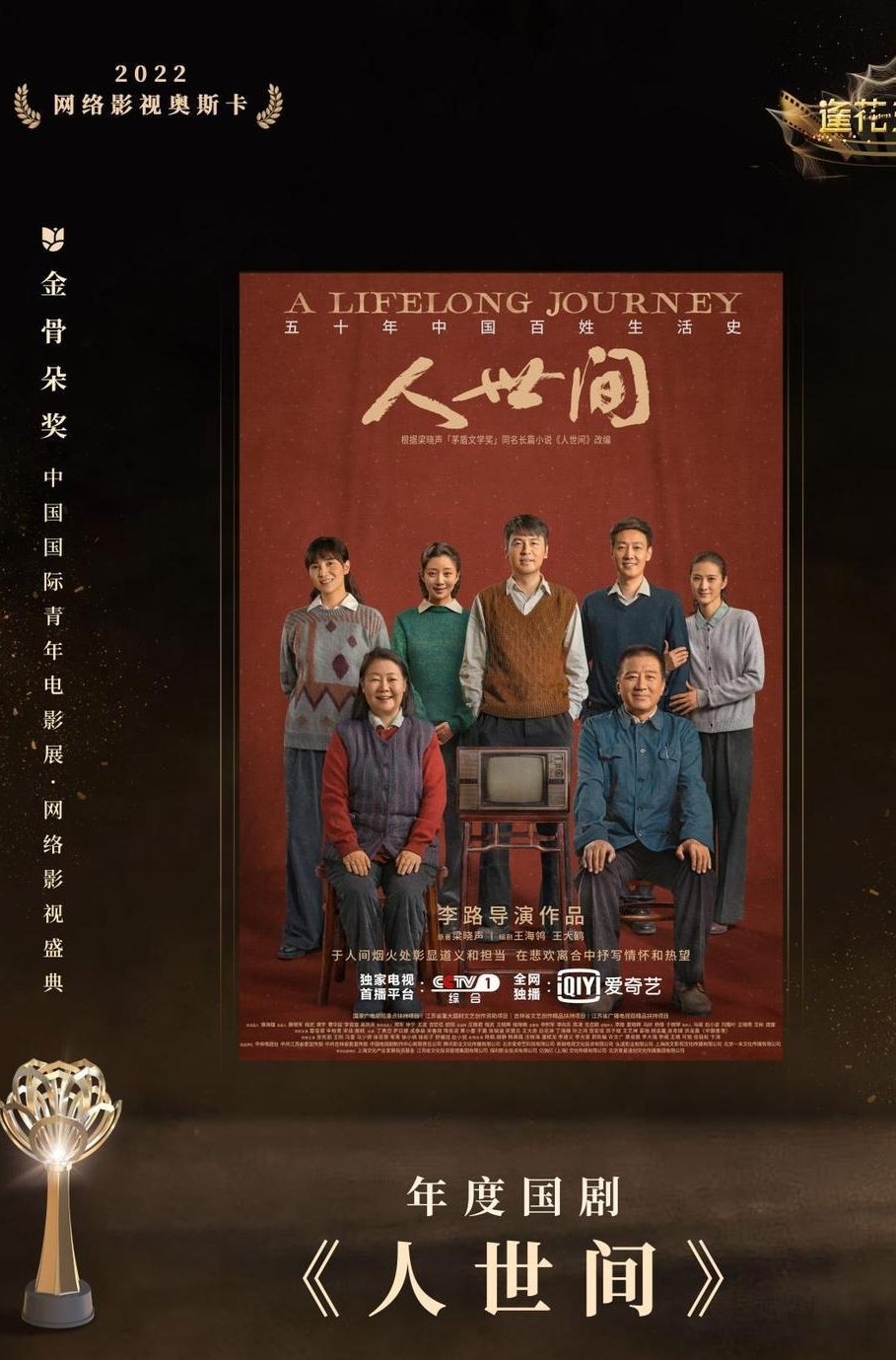
The intersection news China International Youth Film Exhibition · Online Film and...
Lile Shandong | Dongying: Hekou District "Love Reading · Moon Sister Tell Story Story" picture book story meeting activities successfully held
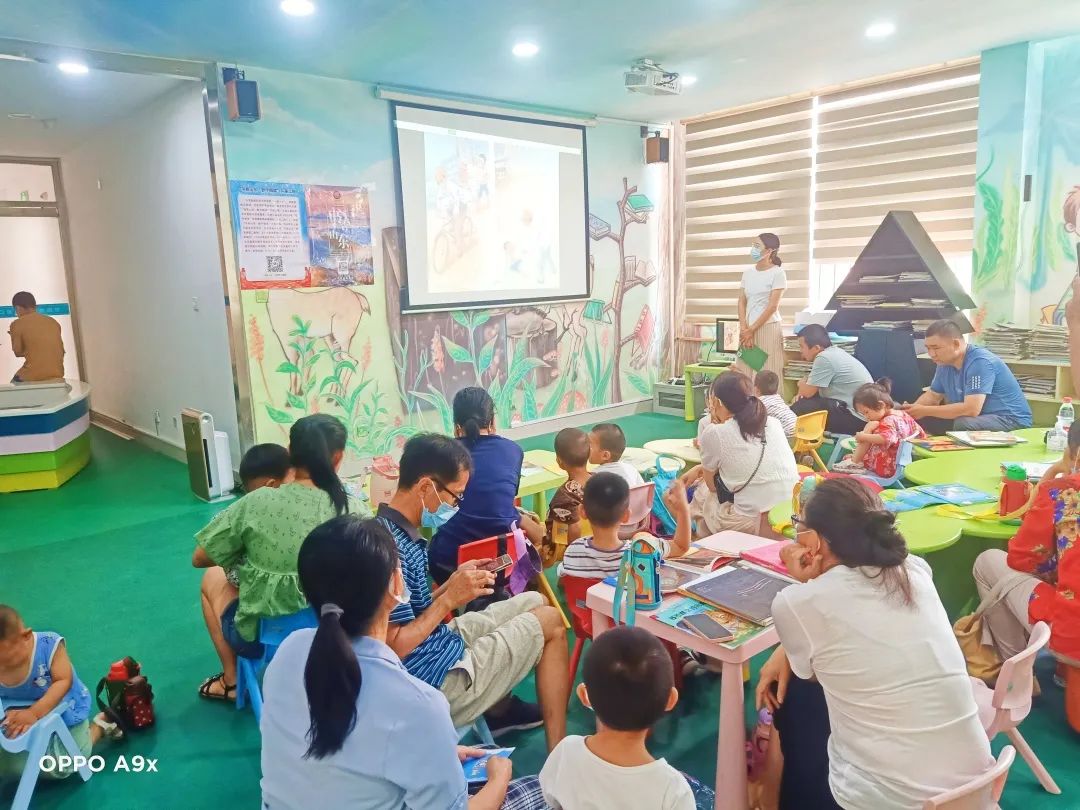
In order to celebrate the 101st anniversary of the founding of the party and stimu...